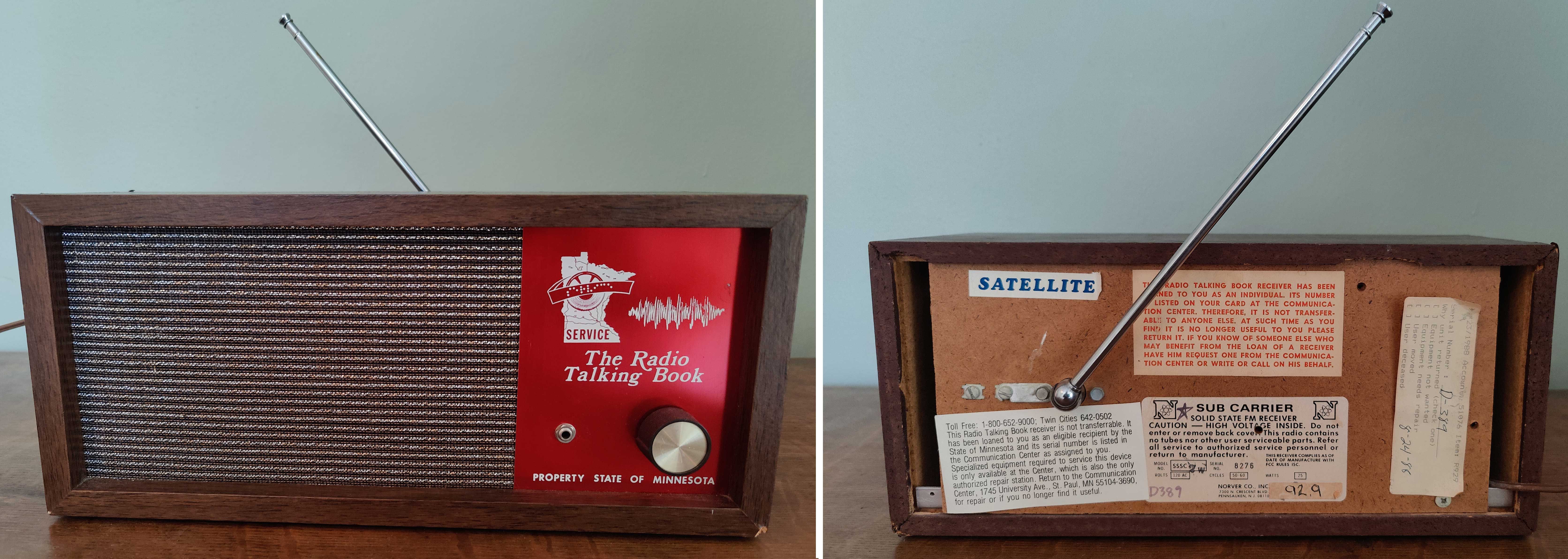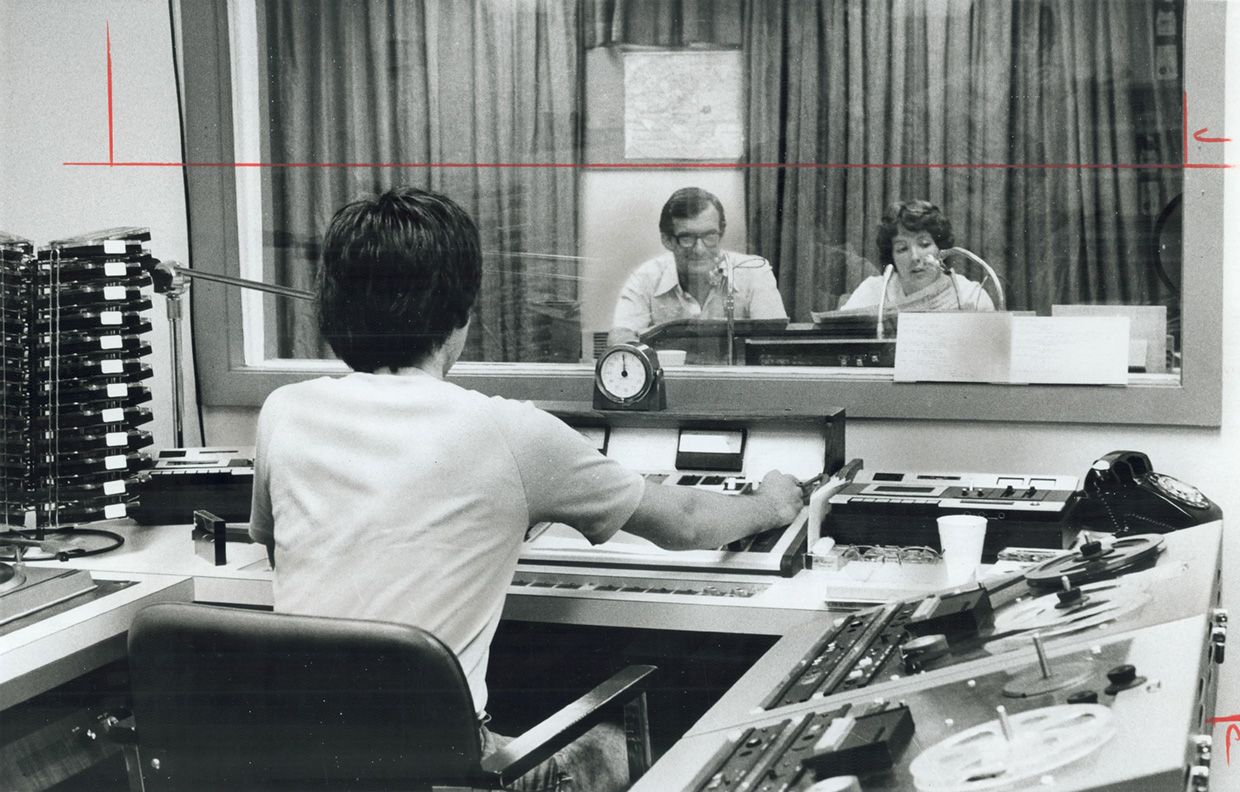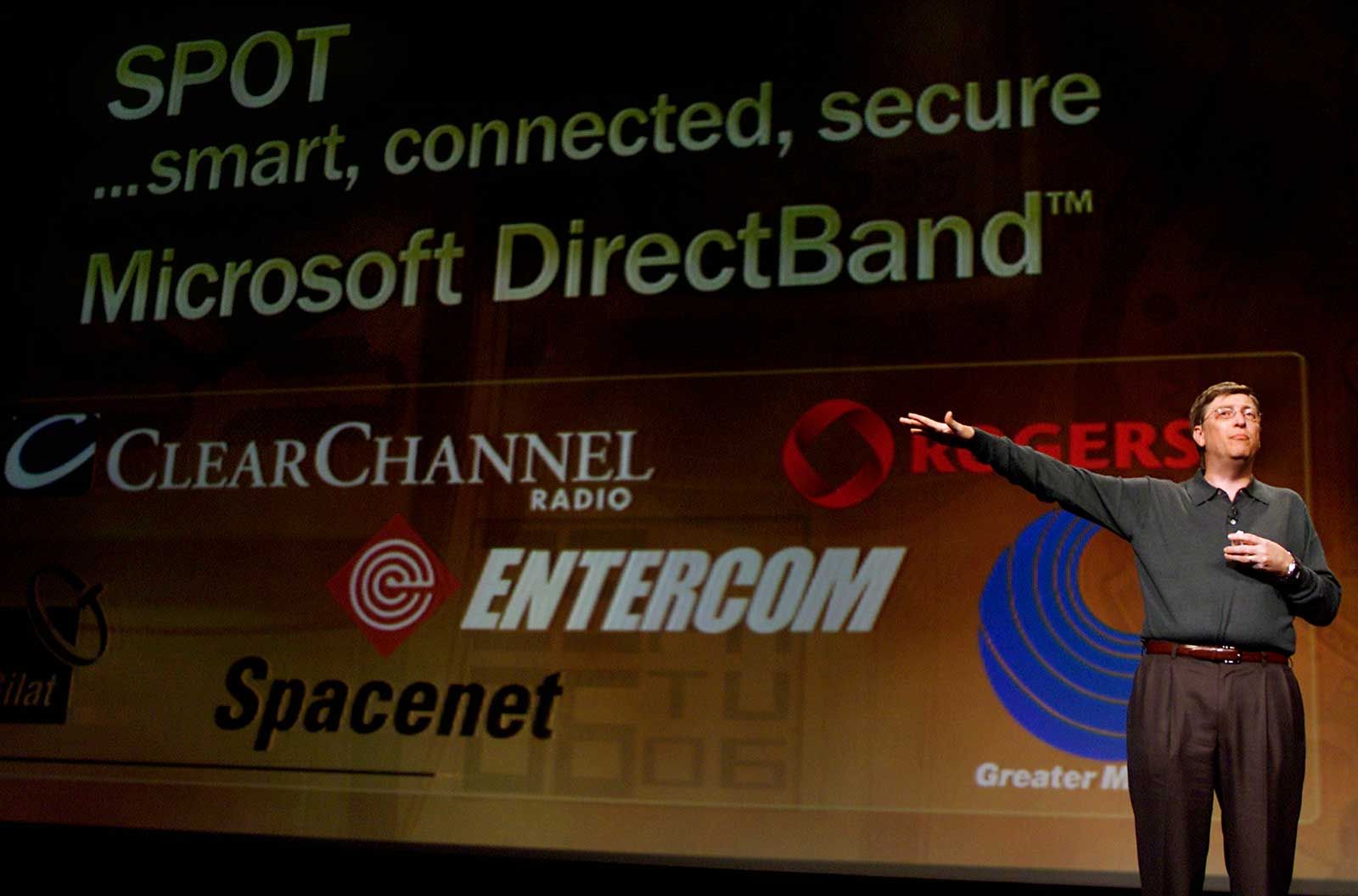Subcarrier Signals: The Unsung Heroes of the FM Dial
A version of this post originally appeared on Tedium, a twice-weekly newsletter that hunts for the end of the long tail.
In our modern era, we tend to choose devices with as many functions as possible, and we bristle at the thought of an object with a single use-hence why umbrellas can be so frustrating to carry around. But sometimes, a single use case is exactly the right level of functionality. This is something I've been thinking about recently after I got my hands on a fairly large radio that has literally one function: You turn it on and a specific station plays, and there's no surface-level way to do anything else with it.
This is a weird device-but for its niche, this device, called a subcarrier radio, was perfect. And it was one of many niches that subcarrier radios made possible.
What the heck is a subcarrier radio signal?In 1985, a South Florida Sun-Sentinel article discussed a potentially lucrative offering for the owners of FM radio stations: ways to make extra money from parts of the licensed signal they weren't already using.
This phenomenon was not unusual at the time; the practice had been around for decades. But what the article highlighted were the numerous ways radio signals were being used that the average listener was likely not even aware of-for background music, for stock reports, even to transmit computerized data.
And while station owners weren't earning a ton of extra money-a single lease brought in US$1,400 a month (about $3,500 today)-for a struggling station, the additional revenue could mean the difference between being in the red and being in the black.
The thing that allows many radio stations to monetize their signals in this way is, essentially, a technical gap inside the FM broadcast signal. These gaps, or subcarriers, are frequencies that aren't being used for the primary signal but could find secondary uses in more specialized contexts.
 RETRO AD ARCHIVES/ALAMY Muzak's elevator music" service was originally delivered over power lines but moved to FM subcarriers in the 1960s.
RETRO AD ARCHIVES/ALAMY Muzak's elevator music" service was originally delivered over power lines but moved to FM subcarriers in the 1960s. Initially, subcarrier signals were used in two ways. First, they allowed for additional bandwidth to strengthen the primary technology. The best examples of this are the analog form of color television, which carried color information through the subcarrier, and FM's stereo capabilities, which leverage subcarrier signals to make room for additional broadcasting bandwidth.
Some of the secondary signals couldn't be used to enhance the primary signal because they weren't directly accessible, but they could still be used to offer completely unrelated, niche services. The most famous of these was the ambient-music service Muzak, which in so many ways reflected all the strengths and weaknesses of specialized radio services. Muzak, which predated FM technology, was initially distributed over electrical lines, but it eventually came to use subcarriers during the 1960s and 1970s.
As Tom Vernon wrote in Radio World, getting a solid Muzak signal was not as easy as getting a standard FM radio line:
The audio signal for a subcarrier service typically arrived at the station's FM transmitter site via an equalized telephone line. From there, it usually went through some form of audio processing, and on to the station's subcarrier generator and then to the exciter. Stations broadcasting subcarriers had to have an FCC type-approved SCA monitor and take regular meter readings of subcarrier frequency, injection level and modulation.
At the receive site, a rooftop antenna was always installed, as FM subcarriers are even more sensitive to multipath degradation than stereo. The installers usually carried an assortment of high-gain, cut-to-frequency, gamma-matched 72-ohm three- and five-element Yagi antennas in their trucks. Cut-to-frequency antennas usually yielded a gain of about 20 dB over broadband FM devices. For extreme reception issues, a stacking harness was available so that two or more antennas could be deployed.
Ultimately, the quality of subcarrier signals was lower than traditional FM broadcasts, which contributed to Muzak's elevator music reputation. And soon enough, satellite radio (and later, Internet streaming) superseded many uses for subcarriers-being both cheaper and allowing for higher fidelity than an FM signal that was already splitting hairs of frequency.
So why was there a sudden rush in demand for subcarriers in the 1980s?
Well, in 1983, the U.S. Federal Communications Commission changed its rules on subcarriers, effectively deregulating them and allowing their use without additional oversight. The Sun-Sentinel article noted that the ruling broadened subcarrier use cases to any legitimate communications purpose, whether or not broadcast-related."
By the mid-1980s, subcarriers were being used well beyond their original use cases, especially in large major markets. Some common use cases included radio stations targeted at physicians (and paid for by the pharmaceutical industry), stock reports, and foreign-language radio signals targeting specific ethnic communities.
But subcarrier broadcasts weren't just a money-making endeavor-they had value in areas you might not even think about when listening to Top 40 radio. Which gets to why a radio set exists that can only pull in a single FM station.
How news-reading subcarrier stations improved access to informationNow that you have a basic understanding of subcarrier radios, let me tell you about the radio I got ahold of, thanks to a suggestion by my pal Matthew Keys (who is doing cool stuff on niche media via his publication The Desk).
 ERNIE SMITH
ERNIE SMITH My radio has just one user-accessible knob, for volume. It can pull in the subcarrier signals for just one station, 92.9 FM, and not much else. It is described as solid state" technology, but it is very much not digital-when I unplugged it, the radio kept playing for about ten seconds after it lost power. And despite having a service date of 1988 on the back, it likely is much older. To my discerning eye, it seems to date to the 1960s.
This is not a Swiss Army knife by any means. But it didn't need to be. The radio, produced for the Radio Talking Book Network, was designed for people with low or no vision to listen to the newspaper, in full, in audio form. Developed by the public radio station KSJR-FM (later known as Minnesota Public Radio) and launched in 1969, the network was the world's first example of a radio reading service. Such services offer a selection of reading materials, usually newspapers, magazines, and books.
The concept, while new to radio, was not completely without precedent. As I wrote in 2016, the first audiobooks were intended for audiences who were blind and also relied on innovative audio technology-in that case, vinyl records decades before the format became popular for music.
Minnesota's Radio Talking Book Network helped to expand this concept to daily periodicals. In many ways, it reflects the state's track record of technological innovation during the 1970s. That track record also includes the Minnesota Educational Computing Consortium, the state-owned software company that gave us the educational game The Oregon Trail.
Using a mixture of staff and volunteer programmers, the Radio Talking Book Network gave listeners access to the newspaper in a form that they could use. In a 1973 broadcast on the student radio station KUOM, network host Larry Davenport discussed how the radio station has one of the most select audiences in the state"-audiences that got to hear radio programmers turn news stories into detailed reports, and daily comics into miniaturized comedy routines.
(An important side note: The state-funded network also played an unfortunate role in the history of gay rights. The first chief announcer for the network, Thom Higgins, was fired in 1970 because of his sexuality and his public advocacy for gay rights. Higgins later participated in organized protests against 1970s-era gay rights opponent Anita Bryant, famously pieing" her at an event in Iowa.)
 TED DINSMORE/GETTY IMAGES In a 1978 photo, a volunteer and a staff member with Canada's Radio Reading Service read articles from the Toronto Star.
TED DINSMORE/GETTY IMAGES In a 1978 photo, a volunteer and a staff member with Canada's Radio Reading Service read articles from the Toronto Star. The Radio Talking Book Network's format was widely copied around the United States, particularly by other public radio stations, and other countries too. While many of these services are now accessible online, radio sets such as the one I got ahold of continue to be offered. As shown by this list from the International Association of Audio Information Services, most states have at least one station dedicated to radio reading.
In my case, perhaps because there aren't any subcarrier signals nearby, the radio picks up the signal for the primary radio station that is closest to it on the dial, 92.9, rather than any unrelated secondary signal. As I recall, the song that came on when I turned it on for the first time was the '90s Santana/Rob Thomas megahit Smooth," because honestly why wouldn't it? That said, if the radio was tuned instead to 90.3, it would pick up the subcarrier signal for my local talking book station.
I'm still torn about whether I should tear my machine apart to see if I can re-tune it to the correct station for my area. (From what I've read online, it can be done.) But ultimately, I'm just glad that services like these exist to allow accessibility to the news for audiences that need them.
Microsoft tried using FM subcarrier signals to turn ordinary gadgets into smart gadgetsYou may remember the period during the 1990s when push" technology was breathlessly hyped as the next big thing, with services like PointCast pitching the idea of the Internet as a method for getting constant ticker tapes of information at all times. As PointCast's Wikipedia page describes it, The company's initial product amounted to a screensaver that displayed news and other information, delivered live over the Internet." Put that way, it doesn't sound particularly innovative, and yet it was popular for a time.
PointCast was basically Twitter, but without the ability to interact with those streams of information. Despite this seemingly modest business model, it was a bandwidth hog and was frequently banned in offices. (How did a company manage to screw up the bandwidth requirements of a stream of information that could have been a basic text ticker? Who knows.)
PointCast was one of the earliest busts of the dot-com boom, but the idea lived on, as streams of data continued to flood our eyeballs in the first decade of the 2000s. But what to do about the constrained data feeds?
 CHRIS FARINA/CORBIS/GETTY IMAGES Bill Gates at CES in 2003, unveiling the next big thing.
CHRIS FARINA/CORBIS/GETTY IMAGES Bill Gates at CES in 2003, unveiling the next big thing. During the 2003 Consumer Electronics Show, Microsoft offered up one vision of a push-technology future. With none other than Bill Gates making the pitch, the company showed off a subscription network called DirectBand (also known as MSN Direct), which sent short text updates over radio signals to devices like watches, coffee makers, alarm clocks, and magnets using a technology called SPOT (for Smart Personal Objects Technology). Essentially, Microsoft tried to invent the Internet of Things using 2003 technology plus FM subcarrier signals. And they actually got a lot closer than you might expect!
While somewhat skeptical of its chances in the market, Washington Post writer Leslie Walker nonetheless noted that Microsoft's idea had potential even if it wasn't Microsoft that executed it.
People in the audience snickered when Gates showed off a teeny magnet he had customized to receive traffic updates from Seattle," Walker wrote. But his point was that such info-magnets could have a gazillion other specialized uses and be affixed almost anywhere-on briefcases, wallets, key chains, watch fobs." (For a less flattering assessment, see IEEE Spectrum's Loser: A Dog Named Spot.")
It was a strange idea at the time despite directly predicting the rise of the smartwatch a little more than a decade later. In fact, Microsoft's network helped bring to life some formative smartphones, most notably a model from Fossil that used Dick Tracy branding.
Some analysts, such as the mobile tech journalist Kevin Toefl, have praised the SPOT watch's simplicity. It couldn't do much besides pull in information from 12 curated streams of data plus personal data such as email from Microsoft services, but what it did do, it was effective at. And the pricing at the time wasn't terrible-$59 per year.
The problem was that it was a one-way medium. Your friends could text you to your heart's delight, but your Dick Tracy watch could not reply.
Ultimately, it literally suffered from bad timing. Microsoft relied upon one-way FM radio for data just at the time cellular broadband was getting off the ground," Toefl wrote for GigaOm in 2013. Once that happened, few wanted a watch that could only receive very limited data through 12 MSN Direct channels."
The Microsoft network was generally forgotten by the public, although it did find some niche use cases, particularly in Garmin GPS devices, where its ability to pull in traffic notifications and weather forecasts was useful. But the technology was not successful enough to stick around, and Microsoft ended the service in 2012.
As it had done with smartphones, Microsoft was an innovator in smartwatches-coming up with some key advances that proved themselves in the market just a few years after the company exited the market. Using FM subcarrier technology wasn't perfect, but it was novel for its time and likely paved the way for future innovations.
Wanna learn more about the ins and outs of FM subcarrier broadcasting? Be sure to check out this video from Fran Blanche, an engineer and YouTuber who is well known for her guitar pedal designs and deep knowledge of how everyday electronics work. It's a good one.
So in the end, this device I got for my collection of interesting junk, a radio that can only tune a single station, is a reminder that objects with a single use case can still find value with the right audience.
That audience might be businesses in search of elevator music. It could be people who need access to a foreign-language broadcast, who can't otherwise get one in their native language from traditional FM stations. Or it could be those with visual disabilities who, just like everyone else, need access to reliable information. And because of a quirk in the way radio works, the audiences who needed those services were able to be served.
About the AuthorErnie Smith is the editor of Tedium, a twice-weekly newsletter. He's also a tech history nut whose words have been featured in Motherboard, OneZero, Input, and Atlas Obscura.